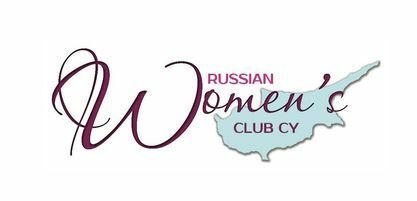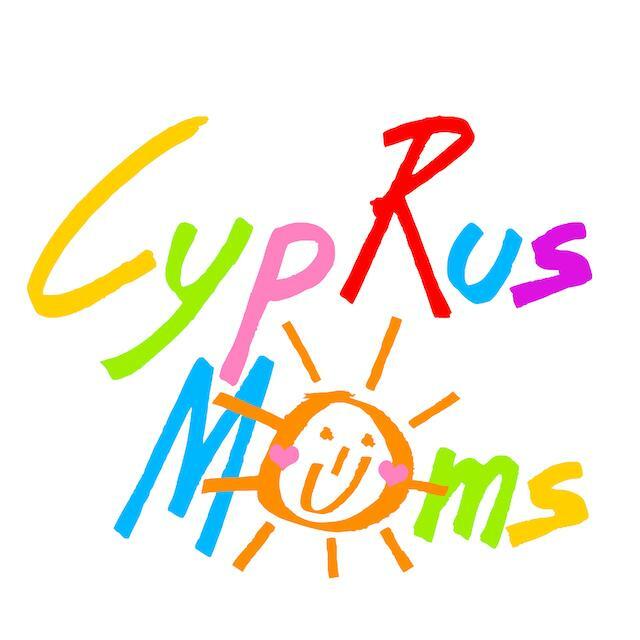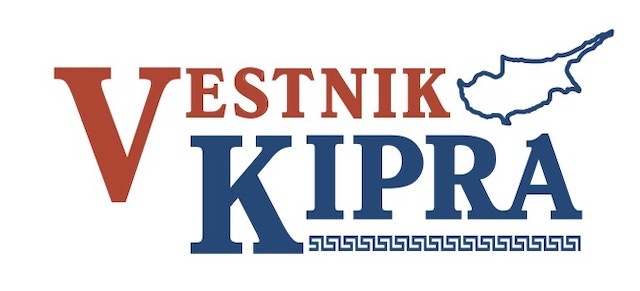KINTSUGI is the result of the co–creation collaboration of artists working in different techniques. Photography and abstract painting have teamed up to tell the stories of 9 brave women who have unveiled their pain, vulnerability, and strength to overcome those.
Kintsugi
STORIES
PROJECT
KINTSUGI is the result of the co-creation collaboration of artists working in different techniques. Photography and abstract painting have teamed up to tell the stories of 9 brave women who have unveiled their pain, vulnerability, and strength to overcome those, similar to broken cups, the pieces reassemble back into a cup with the healing help of golden “scars” in Japanese kintsugi art.
The artists carefully collected women's stories and created a new form of allegory – objects which represent the combination of photography and abstract painting. The three-layer nature of the objects and the texture of the materials reflect the in-and-out woman’s feelings at different stages of living through a traumatic experience.
The philosophy of kintsugi art is based on the understanding that “breakdowns and “cracks” are an integral part to the story of the object, and therefore do not deserve to be forgotten and masked.”
KINTSUGI is a confession, it is an exhibition that is full of complex emotions and feelings, shown in the language of contemporary art. The heroines have gone through difficult and painful stages but were able to find powers to phoenix.
Nata Chebarkova: “The idea of the exhibition is to give support to people who are living through difficult times. To show that they are not alone in their grief, that bad things happen to many of us, and to many very good people. At one moment it feels like you will not get out. But each of us does have the strength to overcome difficulties, learn from them, grow, become stronger, start loving and appreciating ourselves and start living our real life before it's too late. Concrete examples of several people, women, who not only went through this but also found the strength to share it and give support to others.”
Alena Melenteva: “The exhibition is therapeutic in nature: for the participants, for the authors, for the audience, and it is dedicated to the topic of overcoming painful, crisis situations.
Plunging into the experience of the heroines, you are surprised at a woman's ability to stand, endure, overcome, and live on. And to live without trying to forget, to erase everything that happened. But to live, finding the strength to accept the pain and the loss, to accept this traumatic experience, and to be grateful to it to some extent: after all, it helped you to become who you are now.”
Project Coordinator: Ksenia Volokhina
Project Consultant: Nadezhda Antonyuk
The artists carefully collected women's stories and created a new form of allegory – objects which represent the combination of photography and abstract painting. The three-layer nature of the objects and the texture of the materials reflect the in-and-out woman’s feelings at different stages of living through a traumatic experience.
The philosophy of kintsugi art is based on the understanding that “breakdowns and “cracks” are an integral part to the story of the object, and therefore do not deserve to be forgotten and masked.”
KINTSUGI is a confession, it is an exhibition that is full of complex emotions and feelings, shown in the language of contemporary art. The heroines have gone through difficult and painful stages but were able to find powers to phoenix.
Nata Chebarkova: “The idea of the exhibition is to give support to people who are living through difficult times. To show that they are not alone in their grief, that bad things happen to many of us, and to many very good people. At one moment it feels like you will not get out. But each of us does have the strength to overcome difficulties, learn from them, grow, become stronger, start loving and appreciating ourselves and start living our real life before it's too late. Concrete examples of several people, women, who not only went through this but also found the strength to share it and give support to others.”
Alena Melenteva: “The exhibition is therapeutic in nature: for the participants, for the authors, for the audience, and it is dedicated to the topic of overcoming painful, crisis situations.
Plunging into the experience of the heroines, you are surprised at a woman's ability to stand, endure, overcome, and live on. And to live without trying to forget, to erase everything that happened. But to live, finding the strength to accept the pain and the loss, to accept this traumatic experience, and to be grateful to it to some extent: after all, it helped you to become who you are now.”
Project Coordinator: Ksenia Volokhina
Project Consultant: Nadezhda Antonyuk
KINTSUGI is the result of the co-creation collaboration of artists working in different techniques. Photography and abstract painting have teamed up to tell the stories of 9 brave women who have unveiled their pain, vulnerability, and strength to overcome those, similar to broken cups, the pieces reassemble back into a cup with the healing help of golden “scars” in Japanese kintsugi art.
The artists carefully collected women's stories and created a new form of allegory – objects which represent the combination of photography and abstract painting. The three-layer nature of the objects and the texture of the materials reflect the in-and-out woman’s feelings at different stages of living through a traumatic experience.
The philosophy of kintsugi art is based on the understanding that “breakdowns and “cracks” are an integral part to the story of the object, and therefore do not deserve to be forgotten and masked.”
KINTSUGI is a confession, it is an exhibition that is full of complex emotions and feelings, shown in the language of contemporary art. The heroines have gone through difficult and painful stages but were able to find powers to phoenix.
Nata Chebarkova: “The idea of the exhibition is to give support to people who are living through difficult times. To show that they are not alone in their grief, that bad things happen to many of us, and to many very good people. At one moment it feels like you will not get out. But each of us does have the strength to overcome difficulties, learn from them, grow, become stronger, start loving and appreciating ourselves and start living our real life before it's too late. Concrete examples of several people, women, who not only went through this but also found the strength to share it and give support to others.”
Alena Melenteva: “The exhibition is therapeutic in nature: for the participants, for the authors, for the audience, and it is dedicated to the topic of overcoming painful, crisis situations.
Plunging into the experience of the heroines, you are surprised at a woman's ability to stand, endure, overcome, and live on. And to live without trying to forget, to erase everything that happened. But to live, finding the strength to accept the pain and the loss, to accept this traumatic experience, and to be grateful to it to some extent: after all, it helped you to become who you are now.”
Project Coordinator: Ksenia Volokhina
Project Consultant: Nadezhda Antonyuk
The artists carefully collected women's stories and created a new form of allegory – objects which represent the combination of photography and abstract painting. The three-layer nature of the objects and the texture of the materials reflect the in-and-out woman’s feelings at different stages of living through a traumatic experience.
The philosophy of kintsugi art is based on the understanding that “breakdowns and “cracks” are an integral part to the story of the object, and therefore do not deserve to be forgotten and masked.”
KINTSUGI is a confession, it is an exhibition that is full of complex emotions and feelings, shown in the language of contemporary art. The heroines have gone through difficult and painful stages but were able to find powers to phoenix.
Nata Chebarkova: “The idea of the exhibition is to give support to people who are living through difficult times. To show that they are not alone in their grief, that bad things happen to many of us, and to many very good people. At one moment it feels like you will not get out. But each of us does have the strength to overcome difficulties, learn from them, grow, become stronger, start loving and appreciating ourselves and start living our real life before it's too late. Concrete examples of several people, women, who not only went through this but also found the strength to share it and give support to others.”
Alena Melenteva: “The exhibition is therapeutic in nature: for the participants, for the authors, for the audience, and it is dedicated to the topic of overcoming painful, crisis situations.
Plunging into the experience of the heroines, you are surprised at a woman's ability to stand, endure, overcome, and live on. And to live without trying to forget, to erase everything that happened. But to live, finding the strength to accept the pain and the loss, to accept this traumatic experience, and to be grateful to it to some extent: after all, it helped you to become who you are now.”
Project Coordinator: Ksenia Volokhina
Project Consultant: Nadezhda Antonyuk
EVENTS
Opening of the exhibition in Nicosia
May 12, 19:00
Masterclass "Self-portrait: the path of personality"
May 13, 11:00
The exhibition is open for visitors
May 13 - 19
The exhibition in Limassol
March 3 - 5
HOW IT WAS
REVIEWS
“
I have known Alena for over two years and have often said that she truly has a gift for seeing people as they truly are through her photography. And at the KINTSUGI exhibition, which she created together with artist Nata Chebarkova, this talent shone even brighter.
KINTSUGI is a Japanese practice of repairing broken objects with precious materials, and here Nata, as an artist, suggested applying it to people's stories and telling those stories.
Nine portraits (live faces, deep gazes) in three-dimensional technique, where black and white and colored images are superimposed on each other.
Nine personal stories that can only be read through QR codes on the portraits because it's like having a face-to-face conversation.
One of the girls (whom I had not met before) asked: "What is the purpose of this exhibition, and what does it give to the visitor?" I didn't really know how to answer, but I said something like what my American boss said in VOGUE magazine, the owner of a publishing empire: "People want to read about people," he said. And every story teaches you something, the main thing is to want to know it. And I think that the KINTSUGI exhibition was precisely about that.
KINTSUGI is a Japanese practice of repairing broken objects with precious materials, and here Nata, as an artist, suggested applying it to people's stories and telling those stories.
Nine portraits (live faces, deep gazes) in three-dimensional technique, where black and white and colored images are superimposed on each other.
Nine personal stories that can only be read through QR codes on the portraits because it's like having a face-to-face conversation.
One of the girls (whom I had not met before) asked: "What is the purpose of this exhibition, and what does it give to the visitor?" I didn't really know how to answer, but I said something like what my American boss said in VOGUE magazine, the owner of a publishing empire: "People want to read about people," he said. And every story teaches you something, the main thing is to want to know it. And I think that the KINTSUGI exhibition was precisely about that.
“
KINTSUGI is a socio-cultural project about the real stories of nine women whose traumatic experiences form the basis of the artistic practice of two artists, Nata Chebarkova and Alena Melenteva, whose main mediums in art are abstract painting and photography.
By reinterpreting the fragile monologues of the heroines and waiting for the sticky silence of the epilogue, the authors have defined the expressive language for their project through the layering of artistic images. We see delicate structures made of thin acrylic glass, where black and white female portraits shine through the gray, followed by colorful non-representational painting. Nata's abstractions serve as an index, providing a continuous connection between the referent and its sign, between the women themselves and their images captured in Alena's black and white photographs.
The suspended installation system chosen by the authors here is more than appropriate. The separate parts of the works are not attached to each other, creating the illusion of the possibility of removing the layer carrying the drama. The heroines of the project were asked if they would change their past if given the choice, and each answered negatively. As if working through their trauma, the artists overcome their material, involving the viewer in this intangible process. The reality of life requires effort, and the name for these efforts is faith.
By reinterpreting the fragile monologues of the heroines and waiting for the sticky silence of the epilogue, the authors have defined the expressive language for their project through the layering of artistic images. We see delicate structures made of thin acrylic glass, where black and white female portraits shine through the gray, followed by colorful non-representational painting. Nata's abstractions serve as an index, providing a continuous connection between the referent and its sign, between the women themselves and their images captured in Alena's black and white photographs.
The suspended installation system chosen by the authors here is more than appropriate. The separate parts of the works are not attached to each other, creating the illusion of the possibility of removing the layer carrying the drama. The heroines of the project were asked if they would change their past if given the choice, and each answered negatively. As if working through their trauma, the artists overcome their material, involving the viewer in this intangible process. The reality of life requires effort, and the name for these efforts is faith.
“
I have read the stories of all the participants in this exhibition, and have spoken with some of them. I am impressed by their courage and willingness to use their life experiences as a call to others - those who feel lost and lonely. It is very important to know that you are not alone, that there are people who have gone through similar difficult situations, but have not been broken. I wish the participants further success in opening up new and new horizons. Thank you to them and the organizers of the exhibition for paying attention to what is not traditionally talked about. Bravo!
“
Kintsugi is an ancient Japanese art that gives a broken object a "second life." Afterward, it becomes not only whole and beautiful, with intricate patterns replacing the cracks, but also, importantly, UNIQUE.
But is it possible to mend oneself, one's shattered soul, after a long dark period of suffering and adversity?
...Yesterday, I visited a fascinating exhibition where art delicately intertwines with the psychology of human personality.
Gazing into the portraits of these ordinary women living among us, it is sometimes impossible to believe the terrible trials they endured on their paths, shattering into pieces and reassembling themselves through sheer willpower.
What kind of person do they become after such a transformation?
Their tragic personal stories, which they bravely shared with the world, show that a person is capable of enduring ANYTHING and giving themselves a "second life" in which they will embark with their soul, where ugly scars will be concealed by the "golden seams of Kintsugi"...
But is it possible to mend oneself, one's shattered soul, after a long dark period of suffering and adversity?
...Yesterday, I visited a fascinating exhibition where art delicately intertwines with the psychology of human personality.
Gazing into the portraits of these ordinary women living among us, it is sometimes impossible to believe the terrible trials they endured on their paths, shattering into pieces and reassembling themselves through sheer willpower.
What kind of person do they become after such a transformation?
Their tragic personal stories, which they bravely shared with the world, show that a person is capable of enduring ANYTHING and giving themselves a "second life" in which they will embark with their soul, where ugly scars will be concealed by the "golden seams of Kintsugi"...
“
The KINTSUGI exhibition is the result of a project by artist Nata Chebarkova and photographer Alena Melenteva.
KINTSUGI (金継ぎ, "golden repair" in Japanese) is a traditional Japanese art of repairing broken ceramics with lacquer and gold, leaving a visible golden seam where the cracks once were.
The exhibition features photographs by Alena Melenteva covered in multiple layers of plexiglass and painted with abstract art by Nata Chebarkova. The multi-layered portraits are the result of conversations with nine women who have experienced significant trauma and adversity. The first layer is a portrait photograph, the second is a black and white abstraction representing the metaphorical trials, and the third is a colorful abstraction representing the current state after overcoming these trials, forming the heroine of today, just like the cracks in the ceramics filled with gold.
The photography, or rather the artwork, and the story within the project become an extension of each other. The works leave a strong impression, as the portraits of the women convey both tenderness and beauty, as well as incredible strength and resilience. At the same time, they are portraits of fate in a broader understanding of human history and path. The photography here does not seem like a medium solely focused on visual imagery development – it becomes a conversation starter, highlighting the sincerity and depth of the project.
The exhibition is a reflection, an immersion in the archive of memories, and a reflection on one's own experience, which always has a strong therapeutic effect. The project's authors have become guides who want us to share both good and not-so-good stories with one another.
KINTSUGI (金継ぎ, "golden repair" in Japanese) is a traditional Japanese art of repairing broken ceramics with lacquer and gold, leaving a visible golden seam where the cracks once were.
The exhibition features photographs by Alena Melenteva covered in multiple layers of plexiglass and painted with abstract art by Nata Chebarkova. The multi-layered portraits are the result of conversations with nine women who have experienced significant trauma and adversity. The first layer is a portrait photograph, the second is a black and white abstraction representing the metaphorical trials, and the third is a colorful abstraction representing the current state after overcoming these trials, forming the heroine of today, just like the cracks in the ceramics filled with gold.
The photography, or rather the artwork, and the story within the project become an extension of each other. The works leave a strong impression, as the portraits of the women convey both tenderness and beauty, as well as incredible strength and resilience. At the same time, they are portraits of fate in a broader understanding of human history and path. The photography here does not seem like a medium solely focused on visual imagery development – it becomes a conversation starter, highlighting the sincerity and depth of the project.
The exhibition is a reflection, an immersion in the archive of memories, and a reflection on one's own experience, which always has a strong therapeutic effect. The project's authors have become guides who want us to share both good and not-so-good stories with one another.





Information Partners
Alena Melenteva
+357 96 920462
alena.melenteva@gmail.com
https://melenteva.photo
Nata Chebarkova
+357 95 729603
nataliachebarkova@gmail.com
https://natachebarkova.com/
+357 96 920462
alena.melenteva@gmail.com
https://melenteva.photo
Nata Chebarkova
+357 95 729603
nataliachebarkova@gmail.com
https://natachebarkova.com/
CONTACTS

